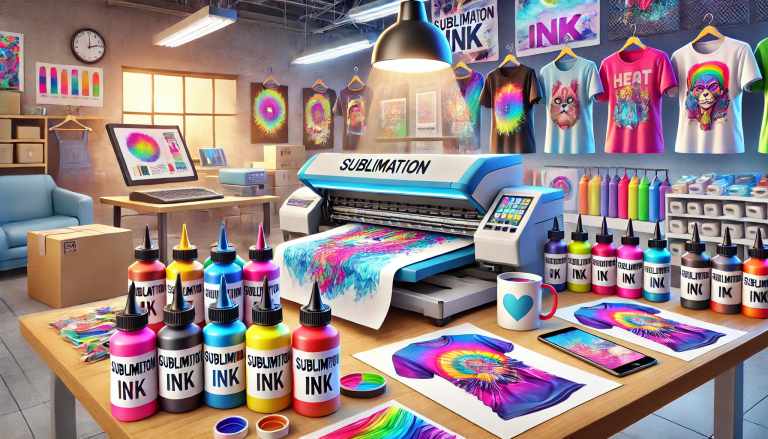In the fast-evolving world of printing technology, innovation is constantly pushing boundaries to meet the demands of modern businesses and consumers. Among the latest advancements is the emergence of high-speed sublimation transfer paper, a groundbreaking material that has revolutionized the way designs are transferred onto substrates. This article explores the transformative impact of high-speed sublimation transfer paper on printing technology, highlighting its features, benefits, and the industries it has transformed.
Understanding High-Speed Sublimation Transfer Paper
High-speed sublimation transfer paper is a specialized type of paper designed for use in the dye sublimation printing process. Unlike traditional sublimation papers, which require longer processing times, high-speed options are engineered to deliver faster, more efficient transfers. This innovation addresses the need for increased productivity, reduced turnaround times, and improved cost-effectiveness in printing operations.
Key Features of High-Speed Sublimation Transfer Paper:
- Faster Transfer Speeds: High-speed sublimation paper is optimized for quick heat and pressure settings, allowing for faster processing times without compromising print quality.
- Enhanced Ink Absorption: The paper’s advanced coating ensures that ink is absorbed efficiently, resulting in vibrant, high-resolution prints.
- Uniform Release Coating: The release agent on the paper enables smooth and consistent transfers, preventing ink residue and ensuring a clean finish.
- Compatibility: High-speed sublimation paper works seamlessly with a wide range of sublimation printers and inks, making it a versatile choice for various applications.
- Durability: The prints produced using high-speed sublimation paper are highly durable, resistant to fading, cracking, and peeling, even in demanding environments.
How High-Speed Sublimation Transfer Paper is Transforming Printing Technology
The introduction of high-speed sublimation transfer paper has had a profound impact on printing technology, offering numerous advantages that have transformed the industry. Below are the key ways in which this innovation is reshaping the field.
1. Increased Productivity and Efficiency
One of the most significant benefits of high-speed sublimation transfer paper is its ability to reduce processing times. By enabling faster heat and pressure settings, this paper allows printers to produce more designs in less time. This is particularly beneficial for businesses with high-volume printing needs, such as custom apparel manufacturers and promotional product producers. Higher productivity translates to increased output, reduced labor costs, and faster turnaround times for customers.
For example, in a garment printing operation, high-speed sublimation paper can reduce the transfer time for a single shirt from 60 seconds to 30 seconds. Over the course of a day, this time-saving adds up, enabling businesses to meet tight deadlines and scale their operations more effectively.
2. Improved Print Quality
Despite its emphasis on speed, high-speed sublimation transfer paper does not sacrifice print quality. The advanced ink absorption properties of this paper ensure that designs are transferred with exceptional clarity, color vibrancy, and detail. This makes it ideal for high-end applications, such as custom apparel, home decor, and personalized gifts.
The uniform release coating also plays a crucial role in maintaining print quality. By preventing ink residue and ensuring a clean transfer, this paper delivers consistent results, reducing the likelihood of defects or reprints.
3. Cost-Effectiveness
High-speed sublimation transfer paper is designed to optimize material usage, minimizing waste and lowering overall production costs. The efficient ink absorption reduces the amount of ink needed per print, while the faster processing times decrease energy consumption. These savings are particularly valuable for businesses operating on tight budgets or those looking to maximize profit margins.
For example, in a large-scale printing operation, the reduction in processing time and ink usage can lead to substantial savings over the course of a year. These cost advantages make high-speed sublimation transfer paper an attractive option for both small-scale startups and established enterprises.
4. Versatility Across Industries
High-speed sublimation transfer paper is not limited to a single industry; its applications are diverse and far-reaching. Here are some of the key industries benefiting from this innovation:
- Apparel and Textiles: From custom T-shirts and hoodies to sportswear and uniforms, high-speed sublimation transfer paper enables fast, high-quality printing on a variety of fabrics.
- Home Decor: Personalized pillows, blankets, and wall art are becoming increasingly popular, and high-speed sublimation paper ensures that these products can be produced quickly and affordably.
- Promotional Products: Businesses can create branded mugs, phone cases, and keychains with stunning designs, thanks to the efficiency and quality of high-speed sublimation transfer paper.
- Outdoor Signage: High-speed sublimation paper is also used for printing banners, posters, and other outdoor advertising materials, where durability and fast production are essential.
5. Sustainability Benefits
In an era where sustainability is a growing concern, high-speed sublimation transfer paper offers several eco-friendly benefits. By reducing processing times and minimizing ink usage, this paper helps lower energy consumption and waste generation. Additionally, the durability of the prints produced with this paper reduces the need for frequent replacements, further contributing to sustainability goals.
For environmentally conscious businesses, high-speed sublimation transfer paper represents a step forward in balancing productivity with responsibility.
Challenges and Considerations
While high-speed sublimation transfer paper offers numerous advantages, there are a few considerations to keep in mind:
- Compatibility with Equipment: It’s essential to ensure that your sublimation printer and heat press are compatible with high-speed sublimation paper. Improper equipment settings can affect print quality and transfer efficiency.
- Quality Control: As with any printing material, maintaining strict quality control is crucial to ensure consistent results. Regularly testing the paper and adjusting settings as needed can help optimize performance.
- Cost: While high-speed sublimation transfer paper is cost-effective in the long run, initial costs may be higher than traditional sublimation papers. However, the savings achieved through increased productivity and reduced material usage typically outweigh the higher upfront costs.
The Future of High-Speed Sublimation Transfer Paper
As printing technology continues to advance, the demand for high-speed sublimation transfer paper is expected to grow. Future developments may focus on further improvements in transfer speed, ink absorption, and sustainability, enabling even greater efficiency and quality. Additionally, advancements in printer and heat press technology will likely enhance compatibility and performance, further unlocking the potential of high-speed sublimation transfer paper.
The integration of artificial intelligence (AI) and automation in printing operations could also play a role in optimizing the use of high-speed sublimation transfer paper. AI-driven software could analyze print data to recommend the best settings for optimal results, while automation could streamline the printing process, reducing human error and increasing efficiency.
Conclusion
The revolution of high-speed sublimation transfer paper represents a significant leap forward in printing technology. By enabling faster, more efficient, and higher-quality transfers, this innovative material has transformed the way businesses approach custom printing. From apparel and home decor to promotional products and outdoor signage, high-speed sublimation transfer paper has opened new possibilities for creativity and productivity.
As the demand for high-quality, fast-produced custom products continues to rise, high-speed sublimation transfer paper will undoubtedly play a pivotal role in meeting these needs. For businesses looking to stay ahead in the competitive printing industry, embracing this cutting-edge technology is not just an option—it’s a necessity.





